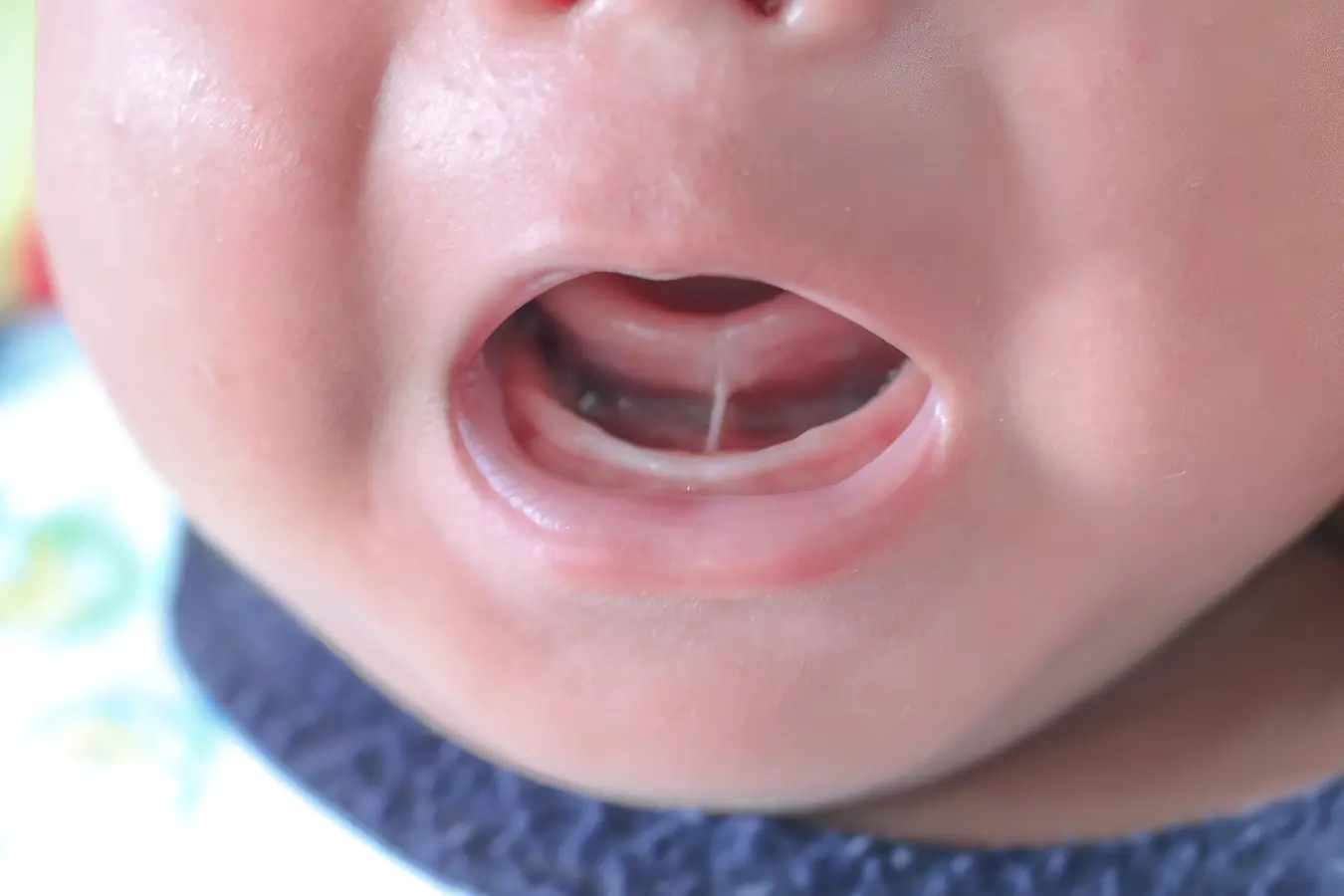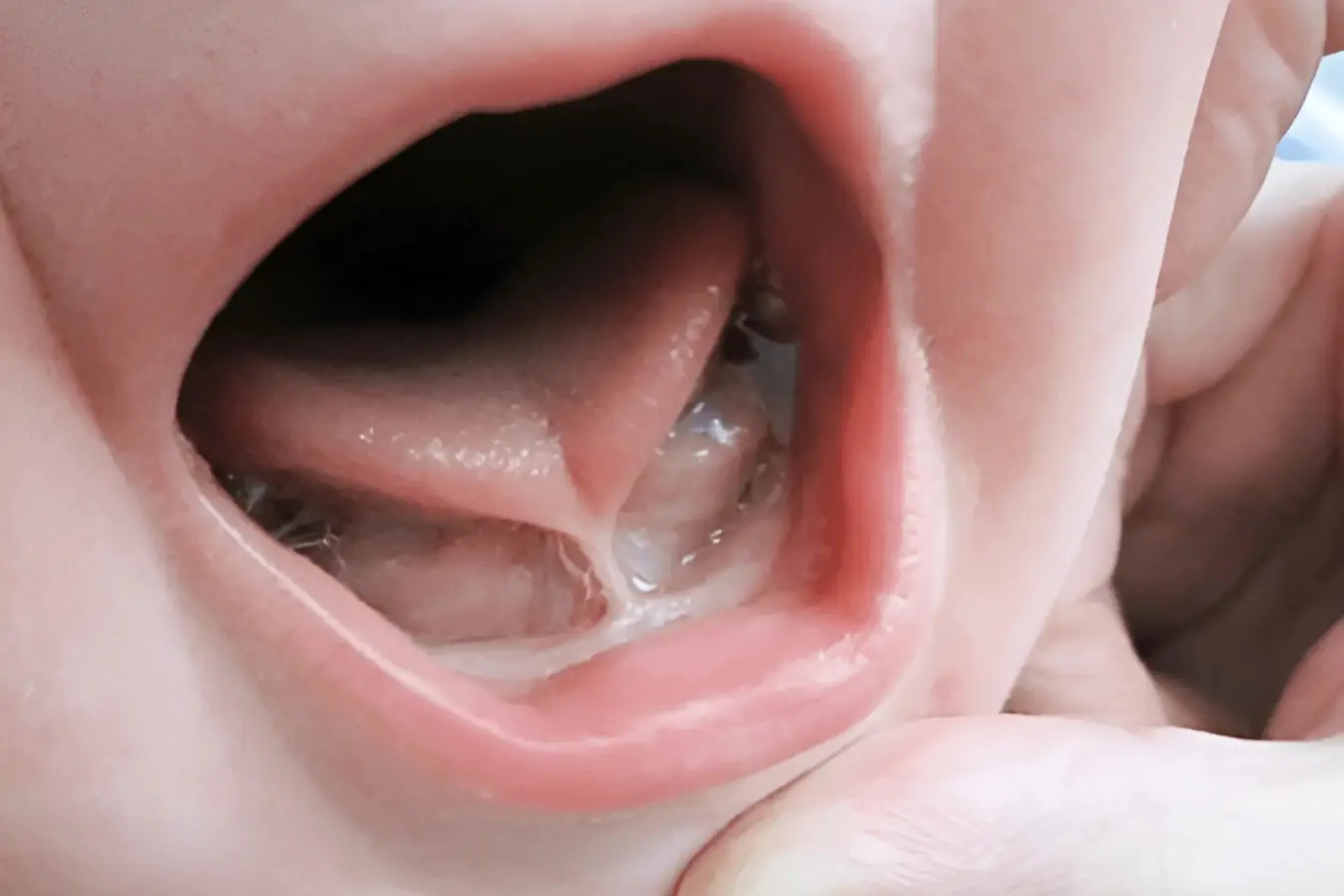Tongue-Tie Release Surgery Specialist in Frisco, TX
Get expert tongue-tie treatment at Dental Smart Kids Dentistry in Frisco, TX and the surrounding neighborhoods. for better feeding, speech, and oral health. Our gentle, precise frenectomy procedure helps your child eat, speak, and smile with ease. Schedule a consultation today for expert care!

What is Tongue-Tie in Children?
A tight or thick lingual frenulum can restrict the tongue’s ability to move freely.
Tongue-tie can cause difficulties with breastfeeding, eating, and speech development..
A simple frenectomy can improve oral function and overall health in children.

Signs Your Children May Have Tongue-Tie
Tongue-tie affects approximately 5-10% of newborns, with varying severity levels. In mild cases, children may have limited impact on their daily life. However, moderate to severe tongue-tie can result in difficulty with breastfeeding, speech development issues, and dental problems, as the limited movement affects tongue positioning and oral health.
Signs of tongue-tie in children include:
Trouble moving the tongue up, side-to-side, or out of the mouth
Speech issues, including trouble with sounds like “l,” “r,” and “th”
Persistent oral discomfort or frustration with tongue mobility

What Causes Tongue-Tie in Children?
Tongue-tie is present at birth and likely linked to genetic factors. It occurs when the lingual frenulum fails to separate properly during fetal development, resulting in restricted tongue movement. While it often runs in families, it can also occur without a family history.
Tongue-tie develops during fetal growth when the lingual frenulum fails to separate properly.
It often runs in families, suggesting a genetic link, though it can also occur without a family history.
A short or tight frenulum limits tongue mobility, affecting feeding and speech.

When is Tongue-Tie Surgery Recommended?
Early detection of tongue-tie is crucial, as untreated cases may lead to developmental challenges. In many cases, pediatricians, dentists, or speech therapists identify tongue-tie and recommend surgery if the restriction significantly impacts a child’s eating, speech, or oral development.
While some mild cases improve over time, a surgical approach is often the best option to ensure children reach essential milestones comfortably. A tongue-tie specialist can assess the child’s specific condition and determine the appropriate time for surgery.

Why Choose Us for Tongue-Tie Surgery?
At Dental Smart Kids, we offer gentle, effective tongue-tie treatment tailored for children. Using laser frenectomy, we ensure minimal discomfort and faster healing. Our team collaborates with speech therapists, lactation consultants, and pediatric dentists to support feeding, speech, and oral development. Schedule a consultation today for expert care!
Kid-Friendly Approach
Gentle, stress-free experience for children
Comprehensive Care
Collaboration with specialists for best results

Types of Tongue-Tie Surgery
Tongue-tie surgery can be performed using two main methods: laser frenectomy or scissors frenotomy. Both methods have their advantages, and a specialist will recommend the most appropriate approach based on the child’s age, condition severity, and specific needs.
Laser Frenectomy
Traditional Frenotomy
In this traditional method, sterile scissors are used to snip the frenulum. This technique is effective and commonly used, especially for mild cases. While it’s usually a quick procedure, it can result in slightly more bleeding than the laser approach. However, it remains a reliable option when a laser is not available, and the procedure still has a high success rate.

How to Prepare Your Child for Tongue-Tie Surgery
Preparing your child for surgery can help them feel calm and safe. Simple explanations, reassurances, and stories about the benefits of the surgery can alleviate anxiety. For older children, explaining how the surgery will make speaking, eating, or playing easier can provide a positive perspective.
If your child has been diagnosed with tongue-tie, consulting a specialist ensures they receive the best care. With the right intervention, children can overcome challenges related to tongue-tie, allowing them to grow, learn, and communicate with confidence.

What to Expect After Tongue-Tie Surgery?
After surgery, children may experience slight discomfort, which is manageable with over-the-counter pain relief. Recovery is generally quick, and many parents notice immediate improvements in their child’s tongue mobility. Specialists usually provide gentle stretches to prevent reattachment and improve healing.
Depending on the child’s age and specific challenges, follow-up therapies may be recommended to support speech and feeding skills, along with regular dental checkups.

Frequently Asked Questions About Tongue-Tie Release Surgery
What are the main signs that my child might have a tongue-tie?
Tongue-tie (ankyloglossia) is suspected when the lingual frenulum restricts the tongue’s movement. Key signs include:
Infants: Difficulty breastfeeding (struggling to latch, poor weight gain).
Older Children: Trouble moving the tongue out or up, speech issues with sounds like “l,” “r,” and “th,” or persistent frustration with tongue mobility.
Dental Concerns: Gaps between the front teeth caused by limited tongue positioning.
How is the laser frenectomy (tongue-tie release) procedure performed?
The laser frenectomy is a modern, minimally invasive technique that uses a specialized laser to gently release the tight frenulum tissue. The procedure is typically very quick and precise. The laser helps reduce bleeding and minimize pain, often eliminating the need for stitches and promoting a much faster recovery compared to traditional scissors methods.
Is the tongue-tie surgery painful, and what is the typical recovery time?
The surgery is generally performed with local anesthesia or a numbing gel to ensure the child is comfortable. Because the laser method is so precise, it minimizes discomfort during and after the procedure. Recovery is generally quick, with many parents noticing immediate improvements in tongue mobility. Any slight soreness is usually manageable with over-the-counter pain relief, and children can often return to normal activities within a day or two.
Why should I choose a tongue-tie specialist for my child's treatment?
Choosing a specialist ensures your child receives gentle, expert care tailored specifically for pediatric needs. We focus on:
Precision: Using advanced laser technology for minimal discomfort and effective release.
Comprehensive Care: Collaborating with specialists like lactation consultants and speech therapists to ensure the best long-term developmental outcomes.
Comfort: Providing a kid-friendly, stress-free environment with sedation options available for anxious children.